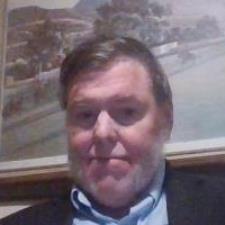Over the last fifty years, I helped students gain a firm grasp of the concepts and problem-solving techniques used the physical sciences and mathematics. In 1976, I graduated Summa Cum Laude (GPA 3.95) from the University of Texas at El Paso with a Bachelor of Science in physics. As an undergraduate I received the university’s Top Ten Seniors award and was inducted as a member of Sigma Pi Sigma, the physics honor society. During this time, I provided individual tutoring in math and physics to...
Over the last fifty years, I helped students gain a firm grasp of the concepts and problem-solving techniques used the physical sciences and mathematics. In 1976, I graduated Summa Cum Laude (GPA 3.95) from the University of Texas at El Paso with a Bachelor of Science in physics. As an undergraduate I received the university’s Top Ten Seniors award and was inducted as a member of Sigma Pi Sigma, the physics honor society. During this time, I provided individual tutoring in math and physics to other college students. In 1979, I obtained a Master of Science (again in physics) from the University of Chicago, with a GPA of 3.25. During this time, I taught physics labs to undergraduates.
Over the next decade I expanded my background with additional studies in chemistry (GPA 3.51), astronomy (GPA 3.67), and mathematics (GPA 4.00)at the University of Texas at Austin. During this time I resumed individual tutoring, primarily for college athletes, mostly in mathematics, and taught small groups of college students in chemistry and astronomy. In addition, I taught physics and astronomy courses at Austin Community College to adults in the early 1990s. I made the classes that I taught challenging, but as one of my better students told me later, when he started taking engineering courses at UT Austin, they were easier than they might have been because of the preparation he received in my class.
Most of my experience of the last thirty years has been in textbook publishing, in which I have written explanations, developed problems, and provided solutions at the high-school and college levels. This work allowed me to describe challenging subjects, such as balancing chemical equations, in such a way that students could easily understand the governing principles, such as the conservation of mass, that allowed them to solve problems. I also provided clear examples of how various types of problems are solved. These were, for all purposes, tutoring methods, but in textbooks I tutored a broad range of students using these books.

